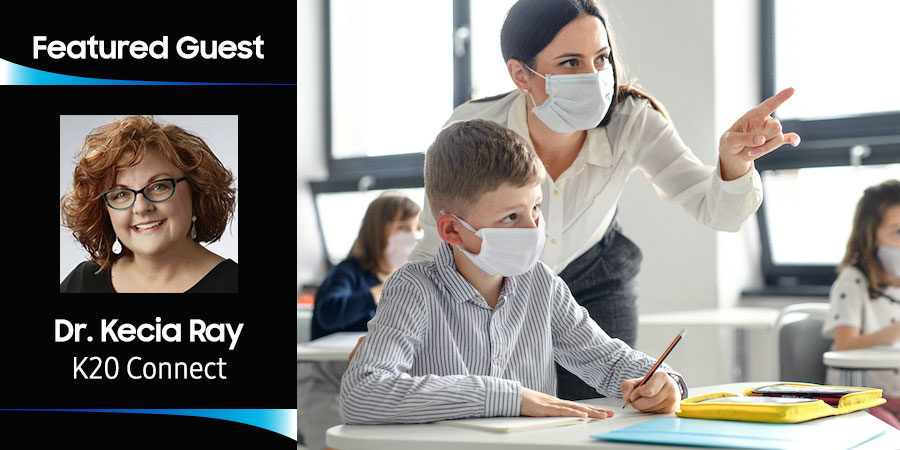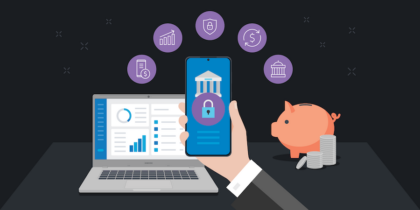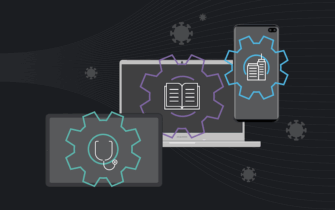Editor’s Note: This conversation is part of our ongoing “Future State Of” series. It has been edited for length and clarity.
The COVID-19 pandemic has forced a lot of parents to do double duty as their children’s at-home teacher. Now schools are working to better understand when and how they will be able to reopen to their students safely and effectively. Taher Behbehani, GM and SVP of Samsung B2B, sits down with Dr. Kecia Ray, principal consultant and president of K20 Connect, to discuss how schools are meeting these challenges and how technology can enhance their efforts.
Taher Behbehani: Hi Dr. Ray, and thanks for speaking with me today. As a former educator, what surprised you most about the challenges schools have had to face as the virus spread and remote learning became the norm?
Dr. Kecia Ray: I was surprised by a few challenges that districts encountered, including establishing quick coordination between government, local school districts, health agencies, and internet service providers. The lift to support student access to internet and devices required such extensive coordination that districts who didn’t have that benefit were left with very limited ways to provide learning opportunities to their students.
There are also delays in being able to process orders for some technologies that makes it improbable for many schools to have devices at the beginning of the next school year. The supply chain became so restricted that many companies couldn’t meet the needs of districts in a timely fashion.
TB: I know that many parents are looking forward to when schools can reopen completely, but do you think some aspects of remote learning will remain, and is that perhaps a good thing?
KR: I believe many districts are realizing the benefits of being well prepared, not only with the resources, such as technology and digital instructional materials, but also teacher preparedness and capacity to teach in blended and online environments. I don’t believe any districts want to be in this position again and, therefore, intend to sustain the lift they’ve established to set up blended and online.
I work with several large districts and their goal is to move into a more blended and online teaching and learning model long term. Districts like LAUSD will benefit because of the threat of fires and other natural events that impact schools remaining opened. Implementing a standardized way to pivot to remote is helpful. States like Georgia already have approved digital learning days for attendance, so districts aren’t penalized when students are receiving instruction via distance. I’ve talked about blended and online since 2007, but now is the time that many districts are truly realizing the benefits of the flexible learning design offered through blended and online instruction.
TB: Due to COVID-19, what changes do you expect to see in schools and universities in terms of enrollment, graduation, grades and test scores?
KR: I believe initial enrollment will be impacted. I believe many parents will think they can sustain homeschooling and I believe virtual schools will increase in enrollment for K12. For university, I believe those with existing online programs will sustain their enrollment, but more traditional campuses may see a decrease, especially if they are in states with hot zones. I think graduation will correlate with enrollment for this year, but over time we may see students lag, especially in university.
I believe this will change the way we not only conceptualize grades, but also how we measure accountability and determine acceptance to college. My hunch is that universities will consider continuing to drop ACT and SAT because the K-12 institutions are challenged to offer high stakes testing in this environment.
I believe a portfolio approach will arise out of the COVID crisis, and we will see more schools and universities adopting assessment models more reflective of student work than student completion of a test. I don’t believe school or university will ever look the way it did before COVID in the U.S. or many other countries.
TB: At Samsung, we have seen that our products and services have helped many people who have been working from home remain productive. How has technology helped schools, teachers and students enhance their productivity in the wake of the pandemic?
KR: I’ve been an education technologist for almost 25 years and an educator longer than that. I’ve never seen a time in our history of education where we have truly seen the benefit of technology. Although technology permeates almost every aspect of society, education is the last frontier for adopting technology to increase efficiencies.
Every aspect of education has been touched by technology during the pandemic and I believe we are realizing what a wonderful asset it can be to accelerate our success.
TB: I know that you have been involved in efforts to create virtual schools, so what is the difference between a virtual classroom and a virtual school?
KR: Virtual schools are wonderful examples of alternative learning environments for students who seek to attend school completely online with limited personal contact with teachers. The experience schools had in the spring with remote learning was a quick turn to accommodate learning in a crisis state. This is not optimal for learning or leading. The model we are seeing erupt around the world is one that has been in play since the 1960s with computer-mediated instruction and refined in the early 2000s as a transformation tool for underperforming schools.
Blended learning is what I utilized in transforming Nashville public schools in 2007. That work was highlighted by Michael Horn and the Christensen Institute and helped inform the blended learning framework. The framework represents a continuum of learning between face-to-face interaction with teachers and content to complete online interaction. It enables students and teachers to move through the continuum as their needs require so that learning can be personalized to the student needs and attend to the demands of the environment. One assumes in blended learning that there will be a face-to-face interaction as well as online, but in the COVID era of education that face-to-face is occurring through videoconference or distance learning. The blended learning continuum provides the most consistent way to allow for continuity of instruction, something that all educators desire to offer their learners.
TB: What can parents do now to help them better prepare for possible ongoing remote learning responsibilities?
KR: There have been some remarkable resources released to support parents through this journey. One of my favorites is from Intel. It provides vetted resources to both educators and parents in an easy-to-find and easy-to-use way. I also like to recommend parent groups and chats that might be found in social media platforms so that ideas can be shared, and support can be available.
It is a very stressful time in everyone’s life right now, but there are some great practices we can borrow from homeschool parents to apply to this time of remote learning and from virtual school parents. I would encourage parents to check out homeschool resources in the area and look to see if your district or state offer virtual schools, especially if parents are worried about sending children back to school within the options presented by the district.
I would also caution everyone to pay careful attention to the social and emotional needs of children along with the academic and be sure to look for signs of depression or anxiety. Seek professional support as soon as you think your child needs special attention.
TB: Do you have any practical tips for students to do well when they are involved in remote learning?
KR: Our students are struggling more than we realize and not just because they are missing out on in-person learning opportunities. Learning can easily take place online, outside or in a building. However, the social and emotional needs of our students that are often attended to within social gatherings and social settings are something that can often be silent and hidden from us when our students are struggling. We need to be careful to observe and listen to our children. They may be experiencing depression or anxiety because of the tremendous change in their worlds.
I feel that students are not always understanding the limitations of the physical environment regarding social distancing and they aren’t fully comprehending the “why.” Any time that can be taken to help them better understand why social distancing, why masks, why hand sanitizers would be helpful and further to help them understand the effect of these things.
TB: This has been a great conversation. Is there anything else we haven’t touched on that you feel is important?
KR: I’ve thoroughly enjoyed this conversation and appreciate the opportunity to be part of this message. I am thankful to Samsung for working with me to help schools receive the devices they need in a timely manner and I look forward to seeing the great work in education throughout our country.
Explore the ways Samsung’s remote learning solutions are helping schools keep up with the new normal. And keep up to date with the latest announcements and insights by following Taher Behbehani on Twitter.








